From Medium to Method: Why Participation is Not a Detail, but a Design
When I first imagined Fluid Curating, I thought of systems and formats: interactive platforms, voting walls, flexible spaces. But it wasn’t until I stepped into the CAP studios that I realized this project had a pulse—and it beat in the artworks of my peers.
During the CAP × CAT Curatorial Encounter (Week 8), I was introduced to a series of participatory works by emerging artists that didn’t just use audience interaction—they needed it. These weren’t completed artworks waiting for interpretation. They were frameworks in waiting, systems unfinished, until the viewer stepped in. In them, I saw the living embodiment of what I had only theorized: curatorial decentralization.
Artist 1: Chen Sijia
In her SQUEEZE ME series (2024), Chen Sijia creates silicone-based objects that invite the audience to physically press, bend, and manipulate the surfaces—transforming passive spectators into haptic co-performers. Her 2025 piece Matree, Patree takes it further: participants use pipe cleaners to modify a rigid genealogical structure, collectively rewriting family trees.
“Her work embodies the tension between personal and political inheritance. The audience doesn’t just watch, they rewrite.”

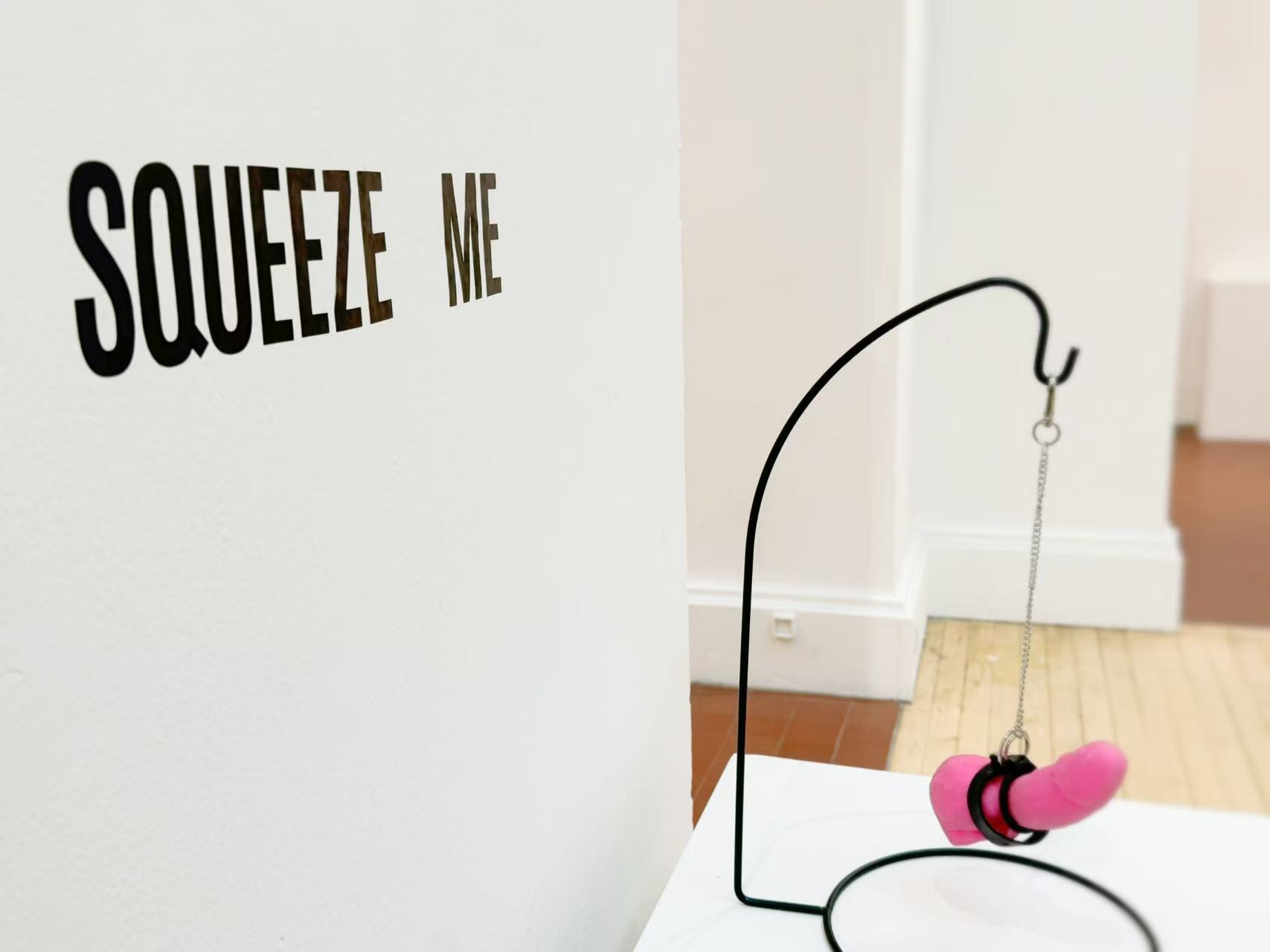
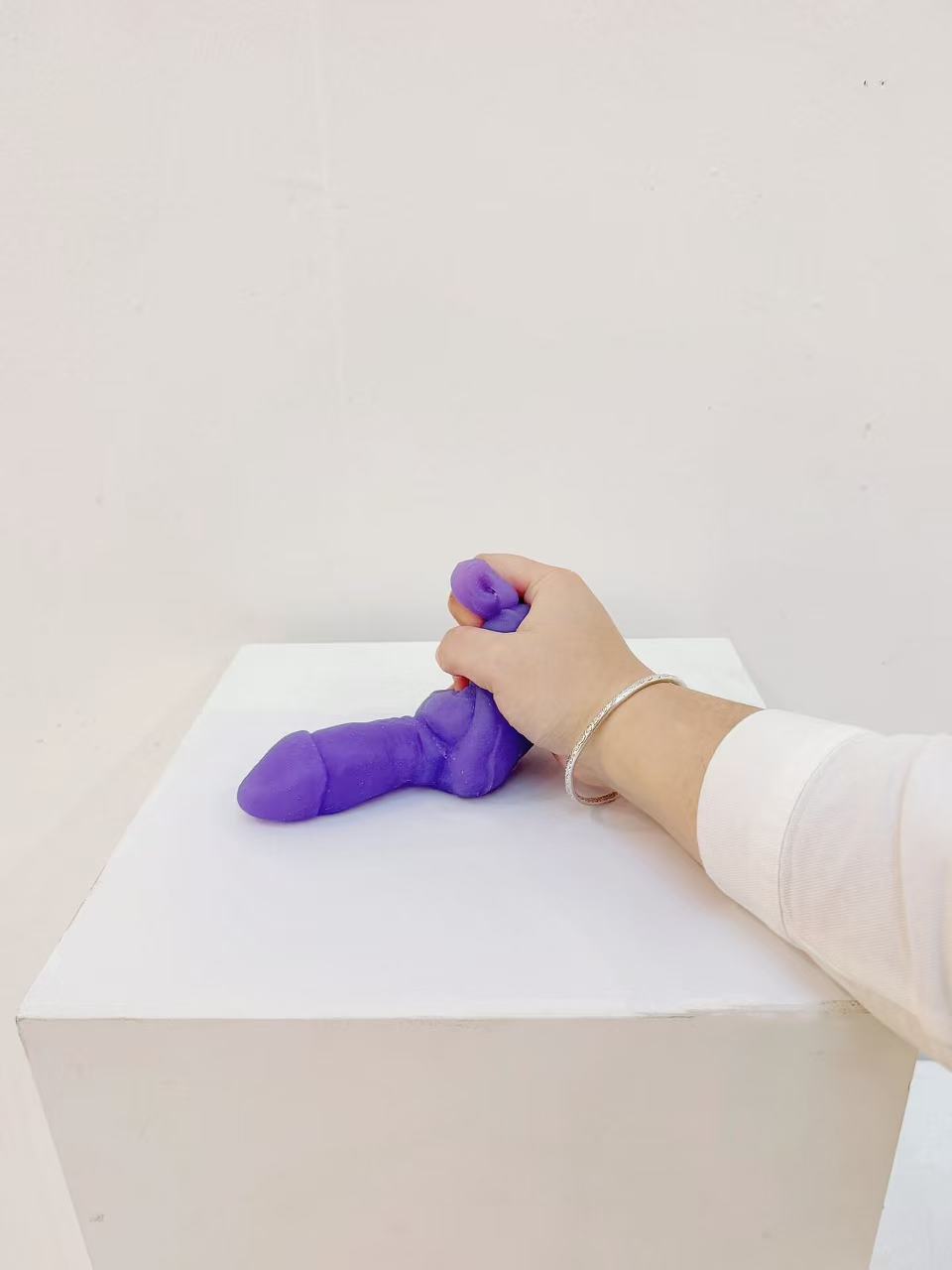





Why she fits: Sijia’s practice resonates with Jacques Rancière’s idea of the emancipated spectator (2009). Her work empowers audiences to act, not just reflect.
Artist 2: Jia Xudong
With The Banality of Evil (2025), Jia uses TouchDesigner to create an interactive video work where digital flowers bloom in proportion to the number of viewers in the room. The more eyes, the more “evil” it becomes—a haunting commentary on complicity and collective violence.
“It’s a real-time ethical question rendered as art. And it cannot function without the audience.”
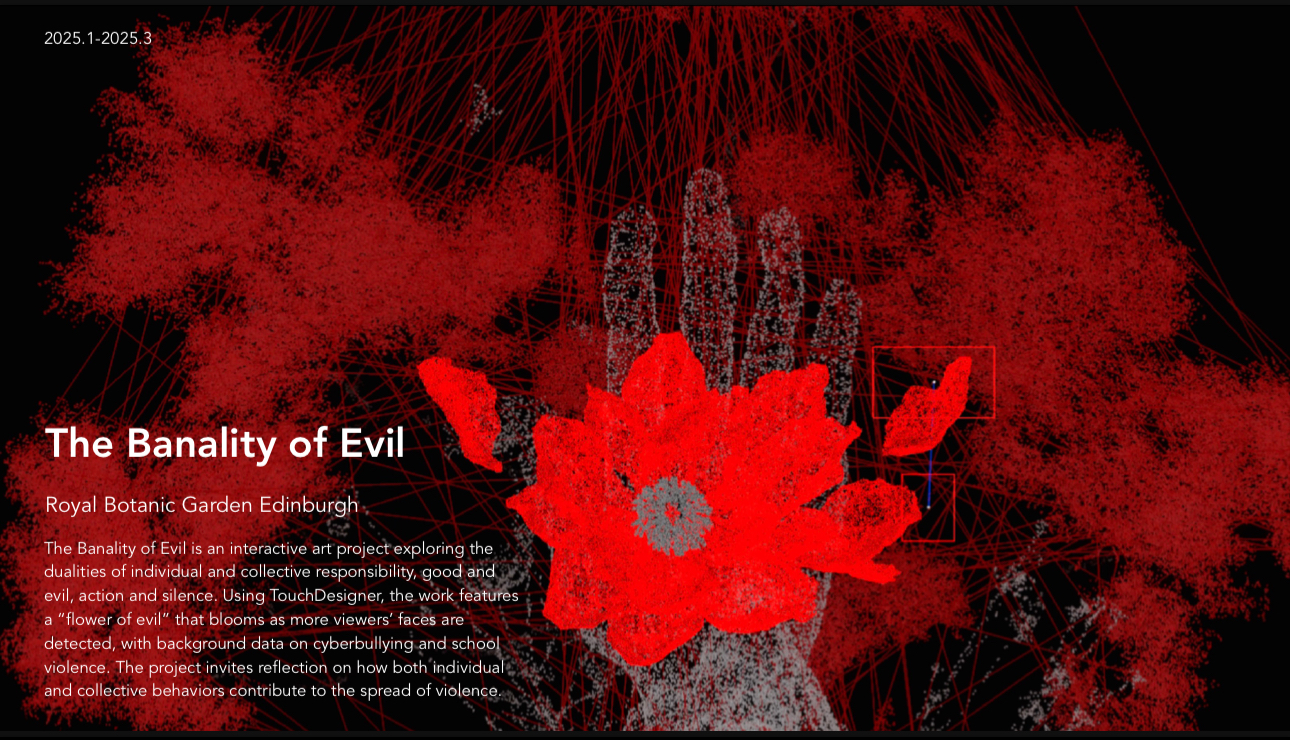
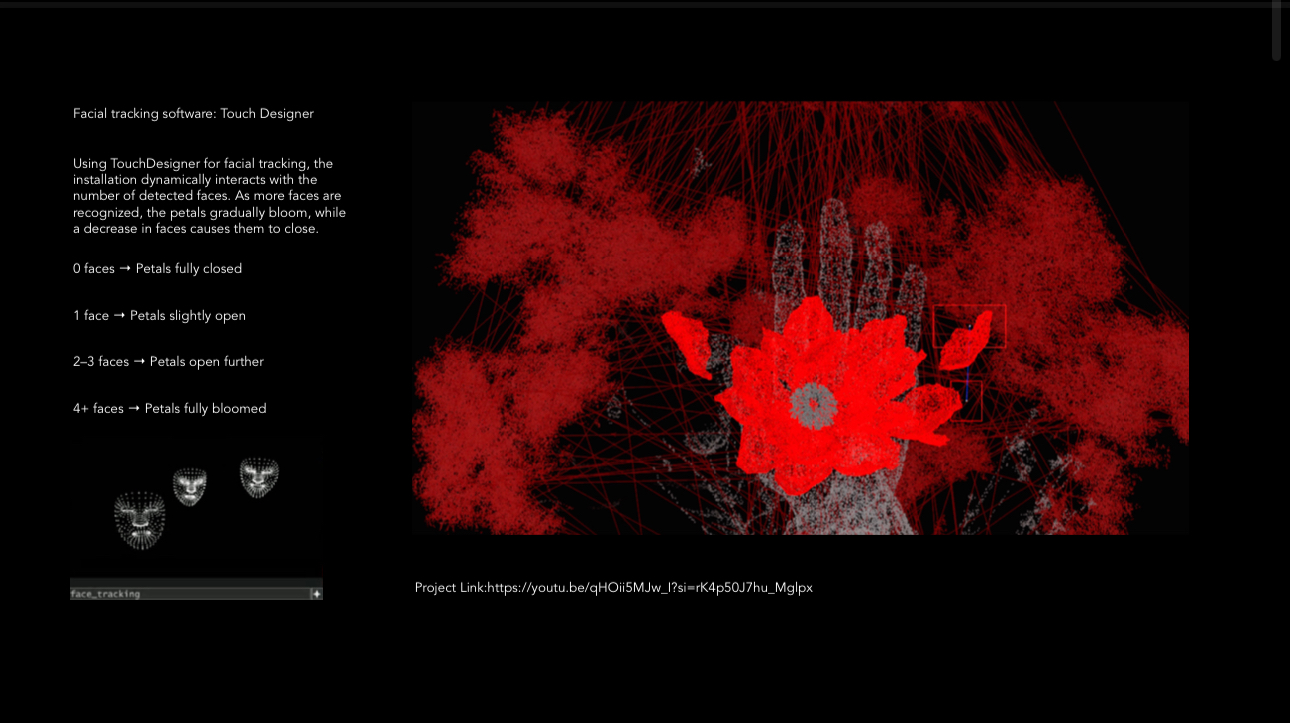
Why he fits: His work echoes Paul O’Neill’s notion of curating as an expanded educational space (Curating and the Educational Turn, 2010), prompting not only interaction but self-inquiry.
Artist 3: Fiza
Fiza’s Mimosa Touch installation offers a botanical metaphor for sensitivity and response. The work reacts to the audience’s touch like a plant—folding, shifting, responding. Viewers aren’t just visitors, they are caretakers.
“It’s a choreography between the human and the vegetal—a shared sensory world.”
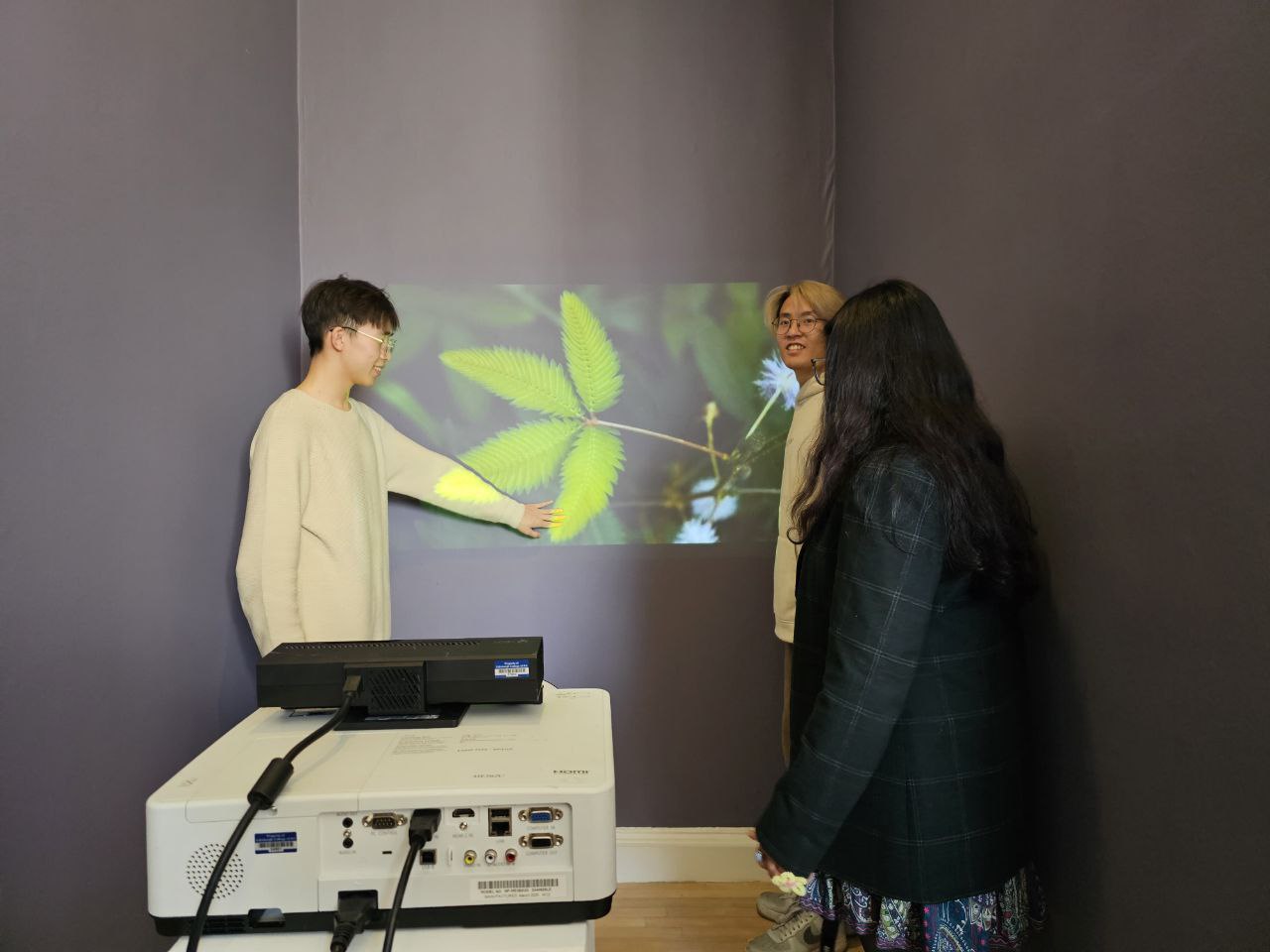
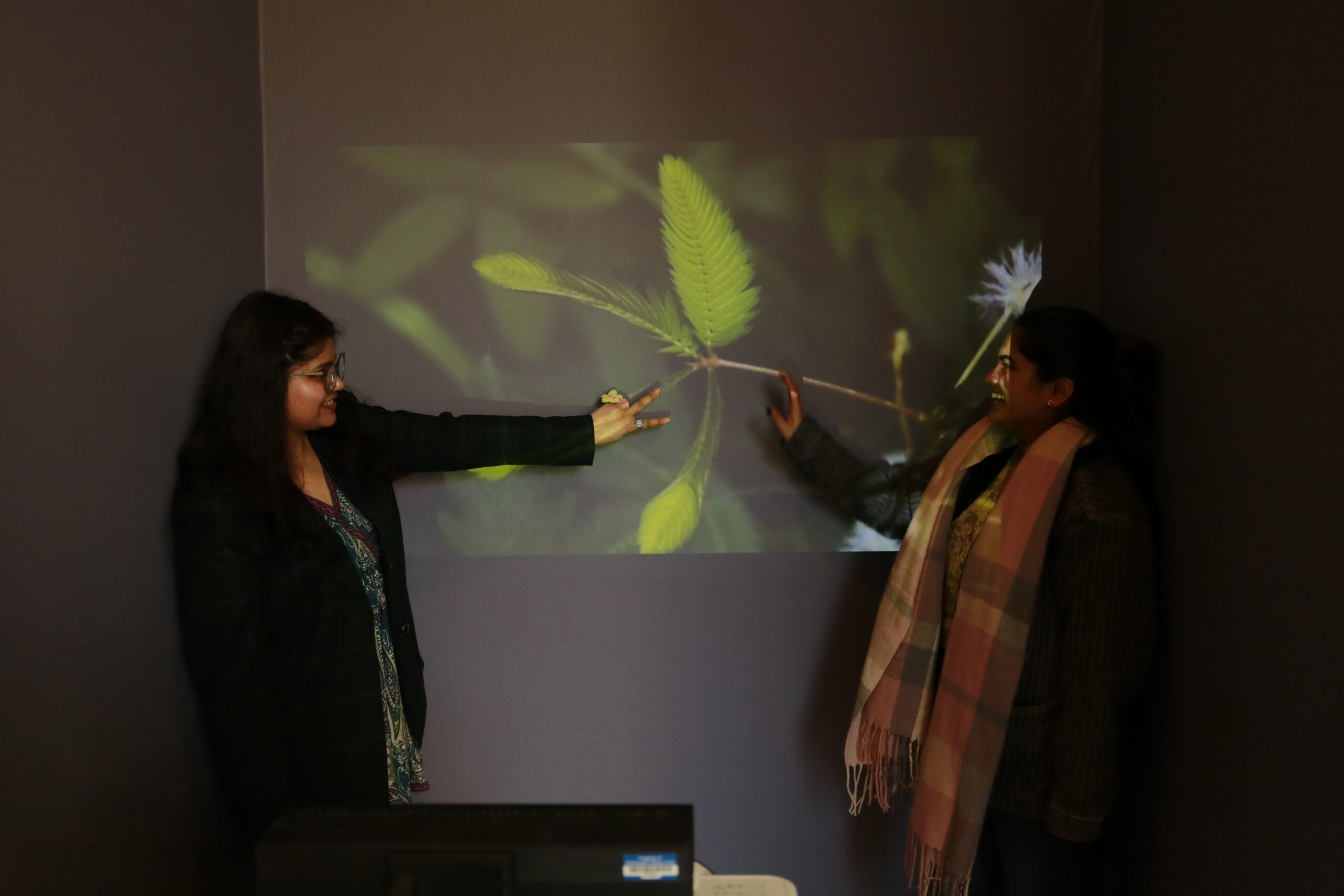
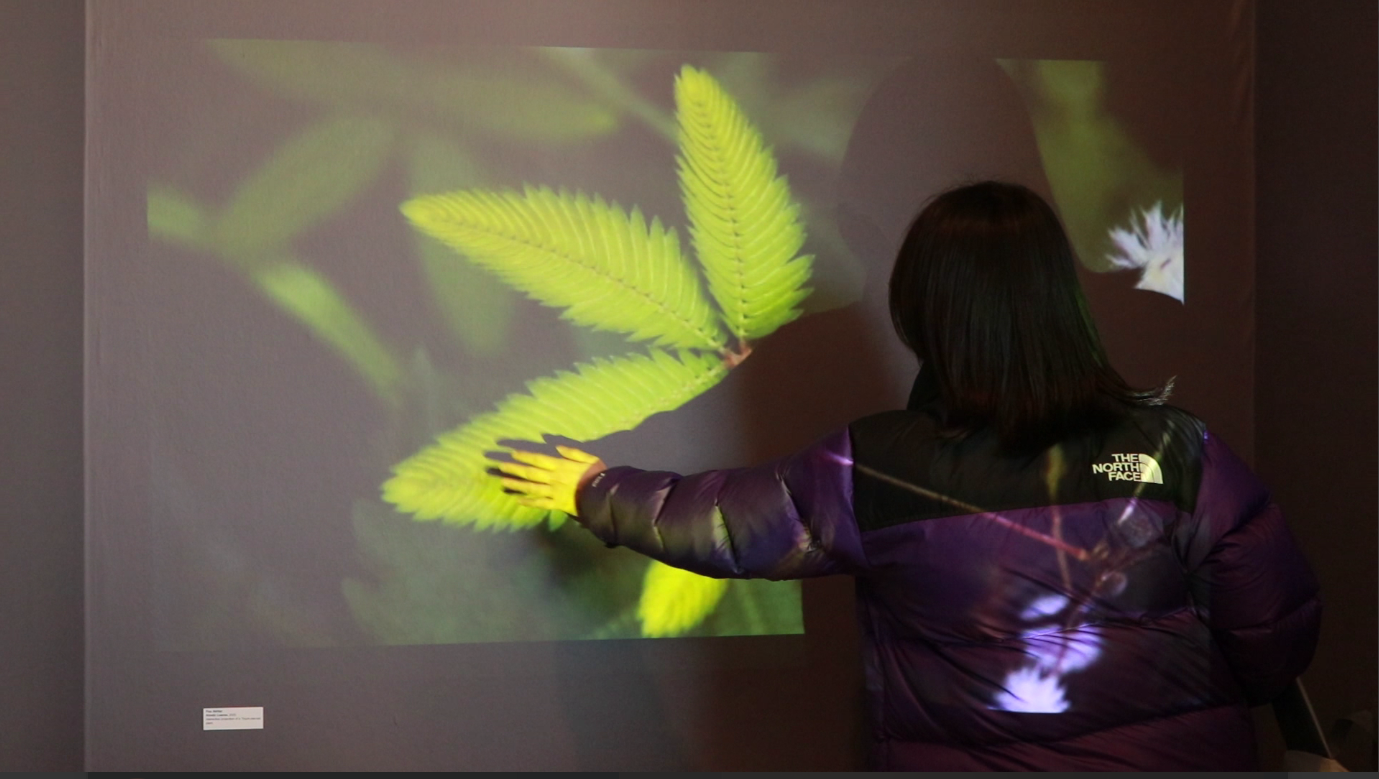
Why she fits: Her work supports my shift away from technological spectacle and towards relational aesthetics, as described by Nicolas Bourriaud (1998).
Artist 4: Keyi Ju
Keyi constructs multisensory interventions that simulate estrangement: obstructing vision, heightening sound, manipulating touch. Her installations are gentle disorientations that require full audience presence. The space becomes not a gallery, but a body.
“Her work makes you feel like a guest in your own skin. That friction is where meaning is made.”
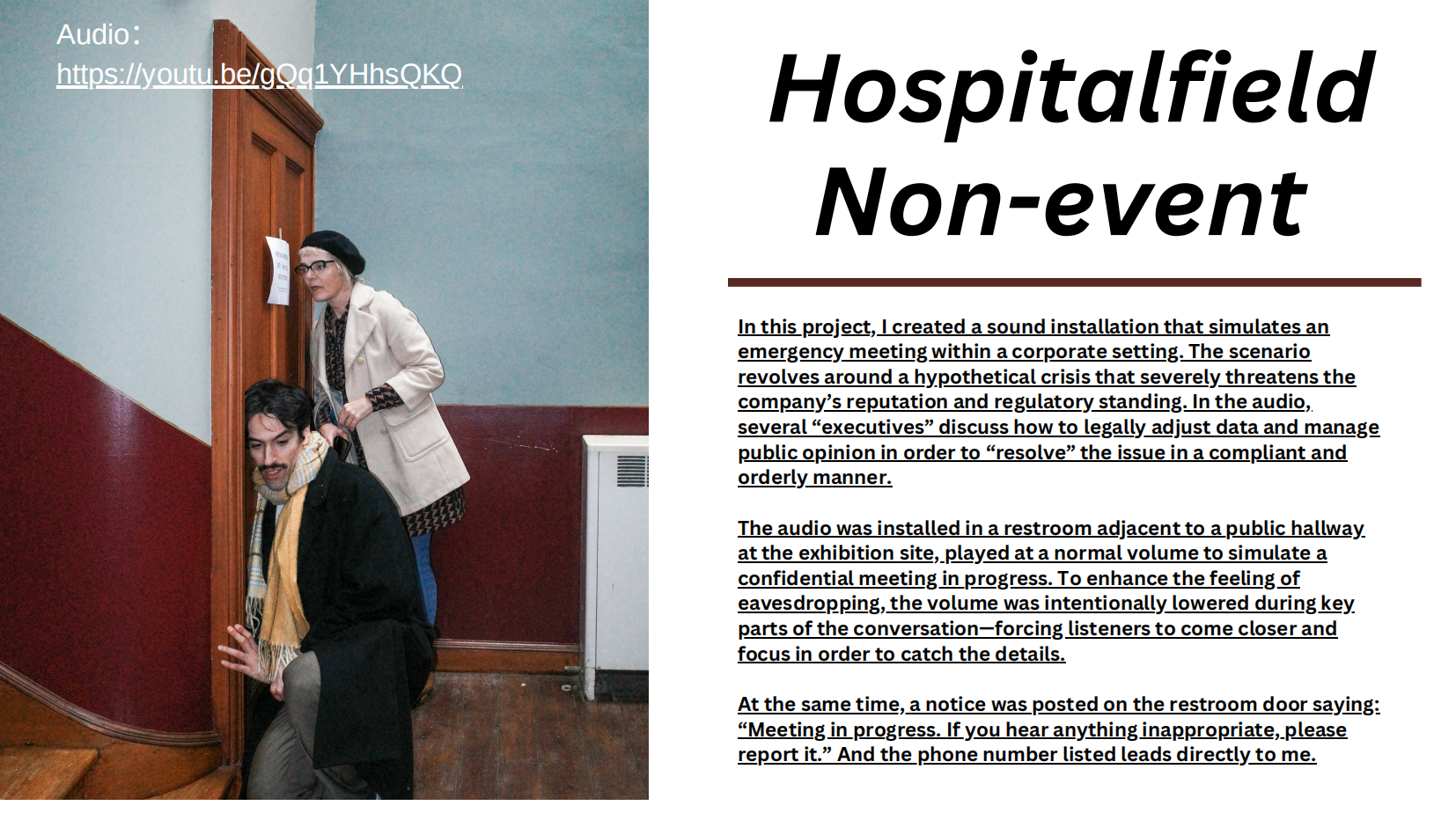
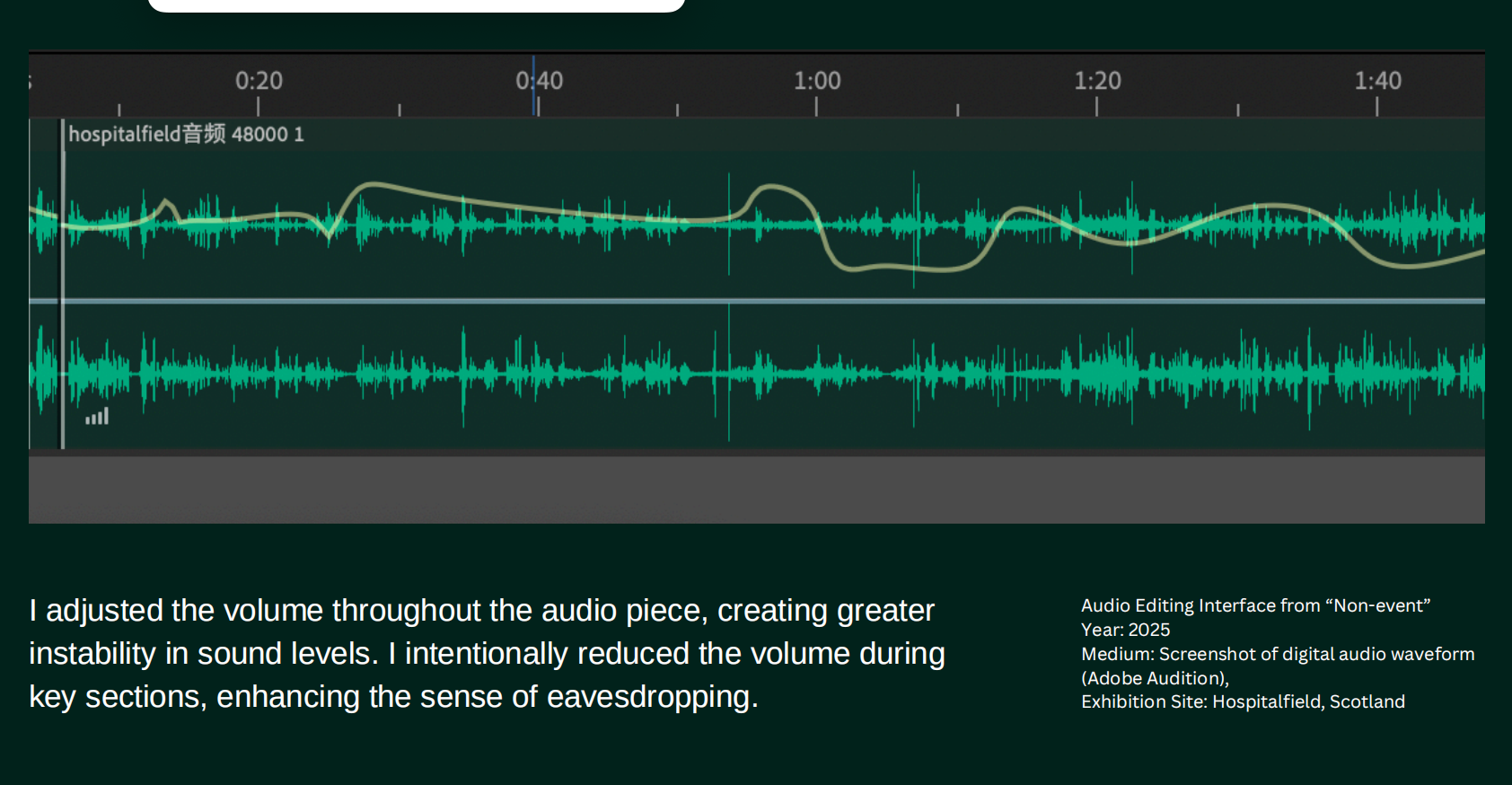 Why she fits: Keyi’s use of spatial perception echoes Aneta Szyłak’s theory of “curating context” (The Curatorial, 2013), where space and sensation are integral to meaning.
Why she fits: Keyi’s use of spatial perception echoes Aneta Szyłak’s theory of “curating context” (The Curatorial, 2013), where space and sensation are integral to meaning.
From Artist Works to Curatorial Logic
Each of these artists confirmed that my curatorial vision didn’t need to invent participation—it needed to host it. Their work led me to restructure my exhibition around living systems that respond to presence.
I no longer separate artwork from structure. The mediums here are not only silicone, projection, wire, or sound. They are interaction, negotiation, friction. These artists are not exhibitors. They are co-authors of a curatorial body that breathes with its audience.
In choosing them, I made a choice not to curate around a theme, but around a method: participation as method, not motif. That’s what makes Fluid Curating truly fluid.
Bibliography
-
Bourriaud, Nicolas. 1998. Relational Aesthetics. Dijon: Les Presses du Réel.
-
Martinon, Jean-Paul, ed. 2013. The Curatorial: A Philosophy of Curating. London: Bloomsbury Academic.
-
O’Neill, Paul, and Mick Wilson, eds. 2010. Curating and the Educational Turn. London: Open Editions / Amsterdam: De Appel.
-
Rancière, Jacques. 2009. The Emancipated Spectator. London: Verso.
-
Szyłak, Aneta. 2013. “Curating Context.” In The Curatorial: A Philosophy of Curating, edited by Jean-Paul Martinon, 217–226. London: Bloomsbury Academic.
